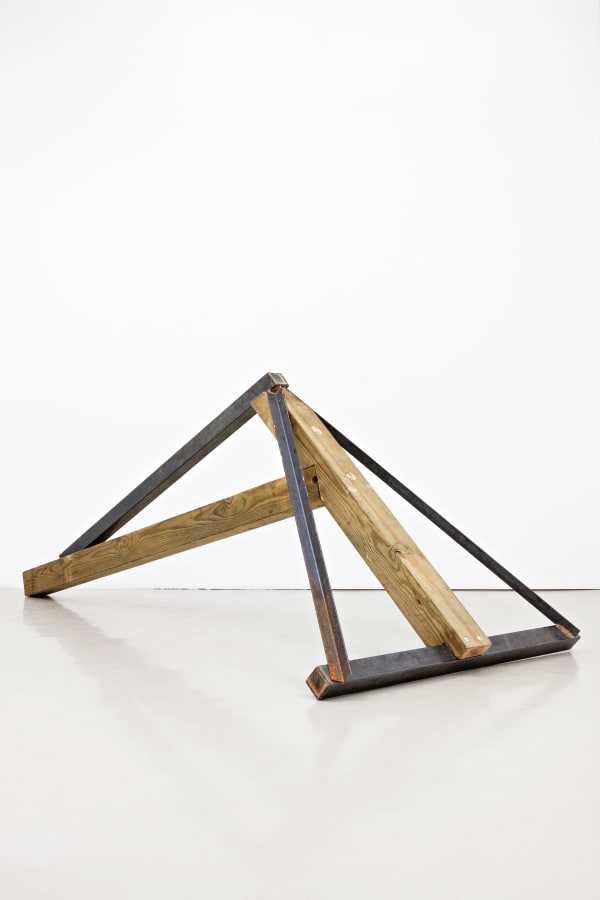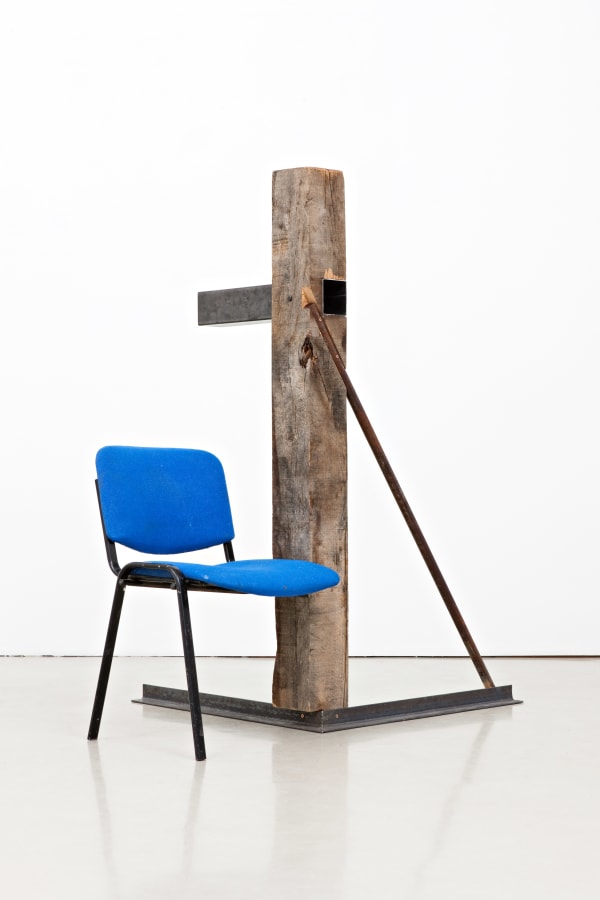OSCAR TUAZON: "Steel, Pressure-treated Wood, Oak Post. Office Chair, Induction Stovetop, Aluminum, 2011"
STANDARD (OSLO)
PRESS RELEASE
-----
OSCAR TUAZON
"STEEL, PRESSURE-TREATED WOOD, OAK POST, OFFICE CHAIR, INDUCTION STOVETOP, ALUMINUM, 2011"
30.09.-29.10.2011 / PREVIEW: FRIDAY 30.09.2011 / 19.00-21.00
-----
STANDARD (OSLO) is proud to announce an exhibition consisting of three new sculptures by gallery artist Oscar Tuazon. Taking their titles from the various materials employed to make each of the sculptures, Tuazon seeks to underline a matter-of-factness while also maintaining a certain sense of reciprocity. These sculptures are defined by their mutual dependence or interaction with other objects in order to assume their meaning or function. They're fragments or components that are simultaneously complete and incomplete; sculptures that assume some tasks; objects that have some work to do. Each of the objects, while apparently a complete, formally resolved object - a thing fulfilling its role as a sculpture - inflect at the same time towards the mundane, the functional, the human.
"A room is a place. A small room is a place where, if you are with one other person, you can be generative, you can say what you never said before. The walls seem to talk with you and give you a sense of what you want to say. The vectors of two meet... The room is a marvelously sensitive thing."
- Louis Kahn, Louis Kahn: on the Thoughtful Making of Spaces: The Dominican Motherhouse and a Modern Culture of Space, 2010
"The computer is called "The Architecture Machine" and its creators seek to build an intelligent machine, one that they can have a dialogue with. Robot architect. It took me a few days to figure out what the machine could do, and was being trained to do, but here it is, and realize dear reader, that this is architecture at a leading American university, and that the project is well funded, and well respected. SEEK is a mechanical device hooked into a computer that will pick up, stack, and rearrange cubical blocks on a command from the computer. In a museum exhibition, the machine, which can handle 300 cubes, and a colony of 60 hamsters were put together. The idea was to have the computer stack the blocks in a way the hamsters liked. The hamsters tended to knock over the blocks, running in and out, and SEEK was to figure out which way the hamsters liked the blocks stacked, and arrange them in that manner. Apparently what happened was the hamsters didn't like any way the machine stacked the blocks, they didn't like the blocks, they didn't like being in the museum, and they just knocked the blocks over. But the idea of it all, in the words of one of the computer team: "...If this idea was carried out in a peopled world, perhaps a giant SEEK could sense the behavior and actions of its people and provide a responsive, useful and friendly living space, better than what now exists..."
- Lloyd Kahn, Smart But Not Wise, 1972
"It wasn't how it was drawn up. I had to make some extra moves. ... Tried to make some magic."
- Michael Vick
-----
Oscar Tuazon (b. 1975, Tacoma, Washington) lives and works in Paris. He received his education from Cooper Union School of Art and the Whitney Independent Study Program, New York. Coinciding with his exhibition at the gallery Tuazon's works may be seen in "ILLUMInations - the 54th International Art Exhibition" in Venice as well as "The Language of Less (Then and Now)" at the Museum of Contemporary Art in Chicago. Recent solo exhibitions include: The Power Station, Dallas (2011); ICA, London; Kunsthalle Bern (2010); Kunstlerhaus Stuttgart (2010); Maccarone (2008); Seattle Art Museum (2008); and the Palais de Tokyo, Paris (2007). Recent group exhibitions include: Galerie Eva Presenhuber, Zürich (2011); Wiels Center for Contemporary Art, Brussels (2010); Palais de Tokyo, Paris; Musee d'art modern de la Ville de Paris; and Museo de Arte Contemporaneo de Vigo (Marco), Vigo (2009).
-----
Installation photography: Vegard Kleven





